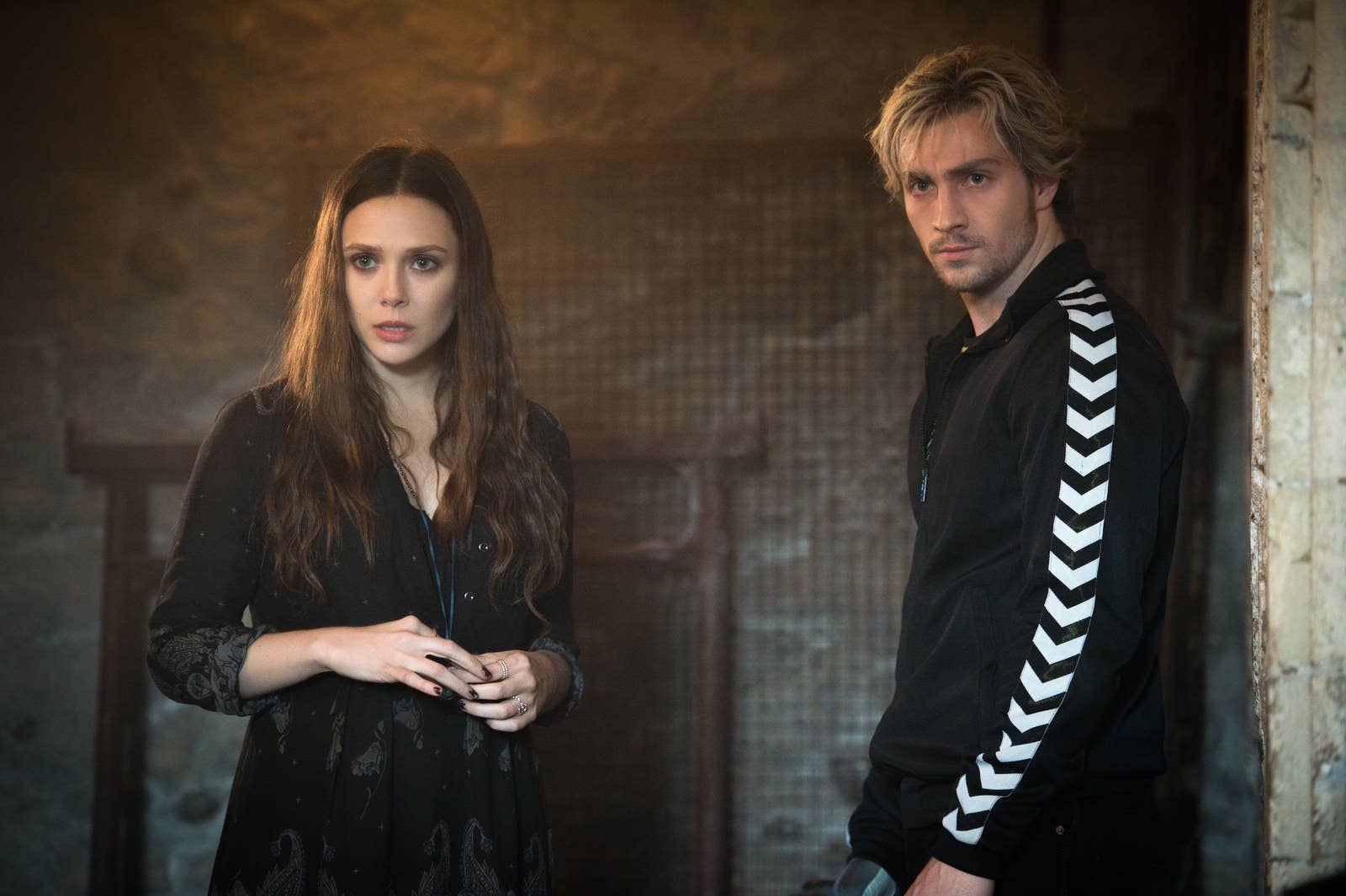
LONDON — A small police force was pinned down behind a makeshift barricade of smoldering car chassis and fallen slabs of concrete on the set of Avengers: Age of Ultron, its gunfire no match for the relentless onslaught of hostile robots of the film’s title, barreling down the barely recognizable city street. The windows of a nearby high-rise exploded in clouds of billowing black smoke as extras attempted to flee the carnage raining down all around them. If there was ever a time for one of the Avengers to swoop in and save the day, it was this moment.
But instead of Iron Man (Robert Downey Jr.), Captain America (Chris Evans), Thor (Chris Hemsworth), Black Widow (Scarlett Johansson), Hawkeye (Jeremy Renner), or the Hulk (Mark Ruffalo), a man in dark motorcycle pants and a body-hugging silver shirt sprinted into the middle of the action, carrying a woman in a tattered black dress and stylish red jacket in his arms. They looked less like superheroes, and more like European party kids who'd just emerged from an all-day rave and accidentally stumbled into chaos. The man skidded to a stop and the woman flew out of his arms — and directly into the path of the oncoming Ultrons.
But there was nothing to worry about: She was far from helpless, and he was always on his toes. They were twin siblings Wanda and Pietro Maximoff, also known respectively as Scarlet Witch (Elizabeth Olsen) and Quicksilver (Aaron Taylor-Johnson) — the newest members of the Avengers franchise.
As the actors and extras set up for the next take, writer-director Joss Whedon explained to BuzzFeed News why Pietro had been carrying his sister. "They have a lovely expedited form of transportation," he said with a smile.
It was July, in the final weeks of production on Age of Ultron, on a massive London soundstage that had been converted from a police training facility into a war-ravaged city in the fictional Eastern European country of Sokovia that Pietro and Wanda call home. But this particular scene was the second part of a sequence that Taylor-Johnson and Olsen began shooting during the very first weeks of principal photography in March, in a village in Italy that was also doubling for this particular Sokovian city. "He's been carrying her all the way from Italy,” Whedon joked. Later, during a break from filming, Olsen compared her feelings about shooting the movie's enormous climax at first in Italy versus when she rejoined the action four months later in London. "It's funny — it's something I've gotten used to," she said. "But at the beginning, it was so insane."
Still, the journey these characters have taken from the pages of Marvel comic books to the bustling set of a Marvel feature film has been even more vast, and strange, and challenging.
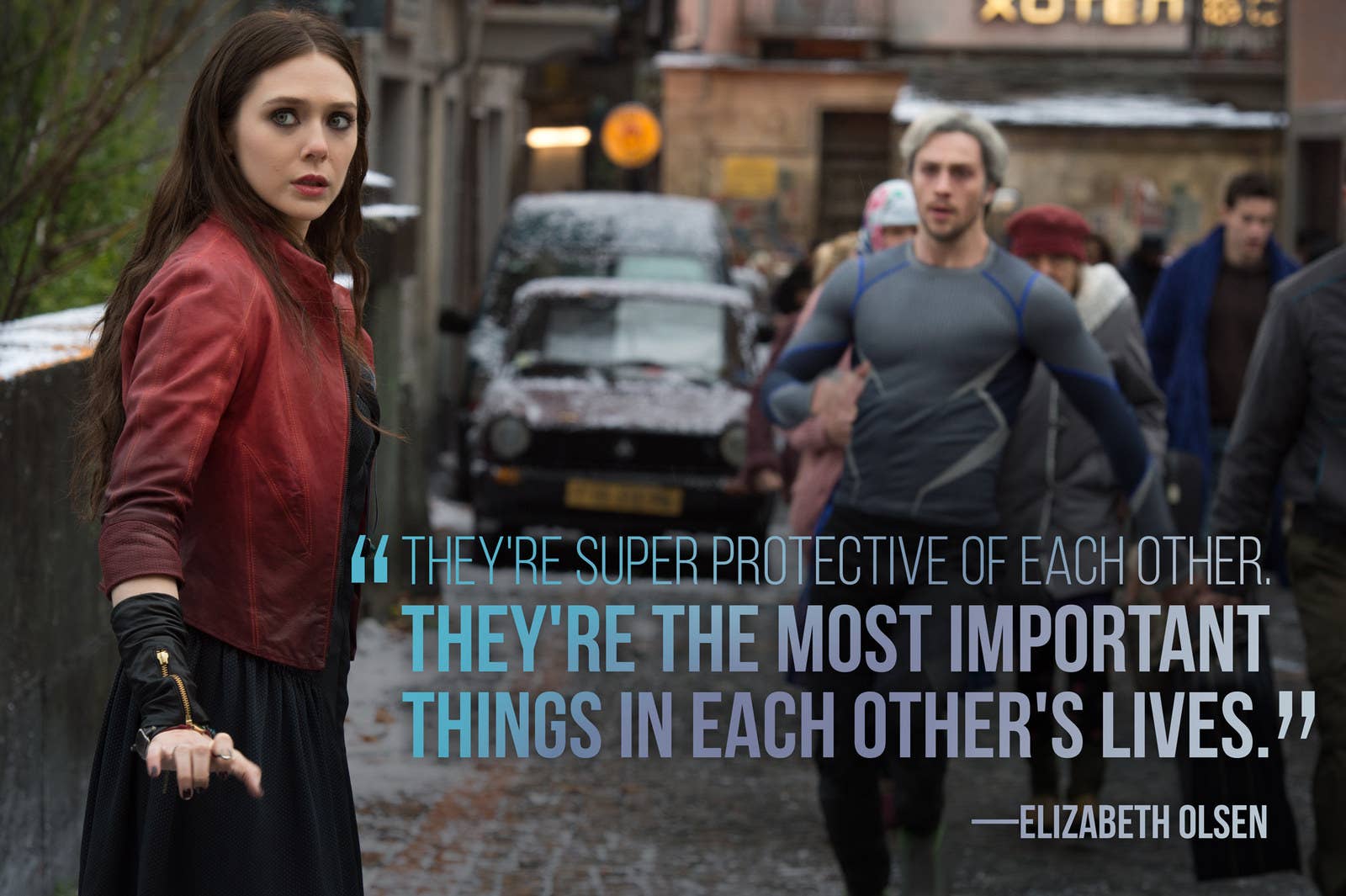
Quicksilver and Scarlet Witch are among the oldest characters in the Marvel Comics canon, debuting in 1964, three years after the Marvel Universe as we know it today began. A year later, they first became entwined with the Avengers; by the time Whedon had started to devour the comics as a teenager in the late 1970s, they were among Marvel's most beloved characters. So when he started writing and directing Marvel Studios' first Avengers movie — the one that ended up grossing $1.5 billion worldwide in 2012 — more than 30 years later, Whedon was already ruminating about bringing the Maximoff twins into the Marvel fold.
"The first movie was, 'Punch!' 'I punch you back!' 'I punch you back!'" he said. "You can only do that so many times before you start to think, This is dulllllllllll." Instead of just throwing punches, Quicksilver and Scarlet Witch exercise their powers in visually dynamic ways: The former can run faster than the speed of sound, while the latter boasts a formidable suite of abilities, including telekinesis and mind control. "We're very much yin and yang," said Taylor-Johnson, back in his trailer. "I'm more physical, and she's more psychological." That duality provided Whedon with a far more varied set of tools with which to wow the audience.
But the Maximoff twins also presented Whedon with an even more tantalizing possibility: the chance to reinvent two beloved Marvel characters from the ground up.
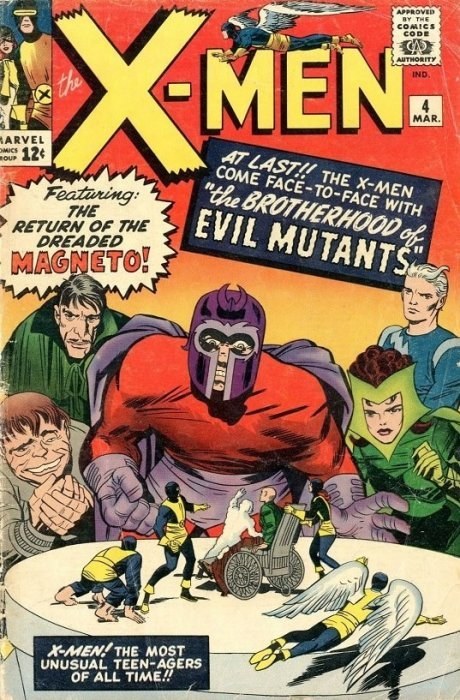
In the comics, Wanda and Pietro are mutants — that 1964 debut was in X-Men #4. Their father is even the X-Men's arch nemesis, Magneto. (Well, kind of, but let's not fall down this particular rabbit hole.) The X-Men movie rights, however, are owned by 20th Century Fox, whereas Marvel Studios is a subsidiary of the Walt Disney Company. Unlike the recent unprecedented deal between Disney and Sony Pictures to share the character of Spider-Man, the creative worlds of Fox's X-Men movies and the Marvel Studios movies remain strictly separate. Not even the word "mutant" can be uttered in the Marvel Cinematic Universe.
As a result, for the first time, Whedon was able to introduce two major characters into the MCU completely on his terms. "It allowed me to tie their origin into the mythos of this [Marvel Studios] universe more effectively," he said of the extremely bizarre circumstance afforded to him by these two giant media corporations’ intellectual property licensing deals. "It's more useful to me than introducing the idea of mutants."
It was also just a plain good time for the writer-director. "I think he's having a lot of fun working with Aaron and me, because he didn't inherit characters," said Olsen. "He was able to create characters with us. We get to have, like, the origin story. Anything from the accent to the movements to our personalities has not been a conversation we had with anyone else on another film. It's just within this world."
The seeds of the Maximoff twins’ new origin story were sewn in the post-credits sequence of 2014's Captain America: The Winter Soldier, which revealed that Hydra leader Baron Wolfgang von Strucker (Thomas Kretschmann) used the mystical scepter wielded by Loki (Tom Hiddleston) in 2012's The Avengers for a series of human experiments. And that ultimately caused Wanda and Pietro to become Scarlet Witch and Quicksilver. Whedon is quick to point out, however, that the twins — who, in his script, were orphaned at 10 when their parents were killed in a bomb attack — volunteered for this fate, because of their darker points of view on the heroes we've grown to love.
"They don't like America, and they don't like the Avengers," Whedon told BuzzFeed News many months later while in the final weeks of post-production on the movie. "We only touch on it briefly — there was more. When the movie was an hour longer, everything got explained a lot." (According to Whedon, Age of Ultron clocks in a full minute shorter than its predecessor, or roughly 142 minutes, debunking rumors that it is nearly three hours long.) "The Avengers are like a world power, and not everybody's on board with the Avengers coming in and starting fights, even in the name of justice," he continued. "So you need that dissenting voice, and you need to understand it and sympathize with it."
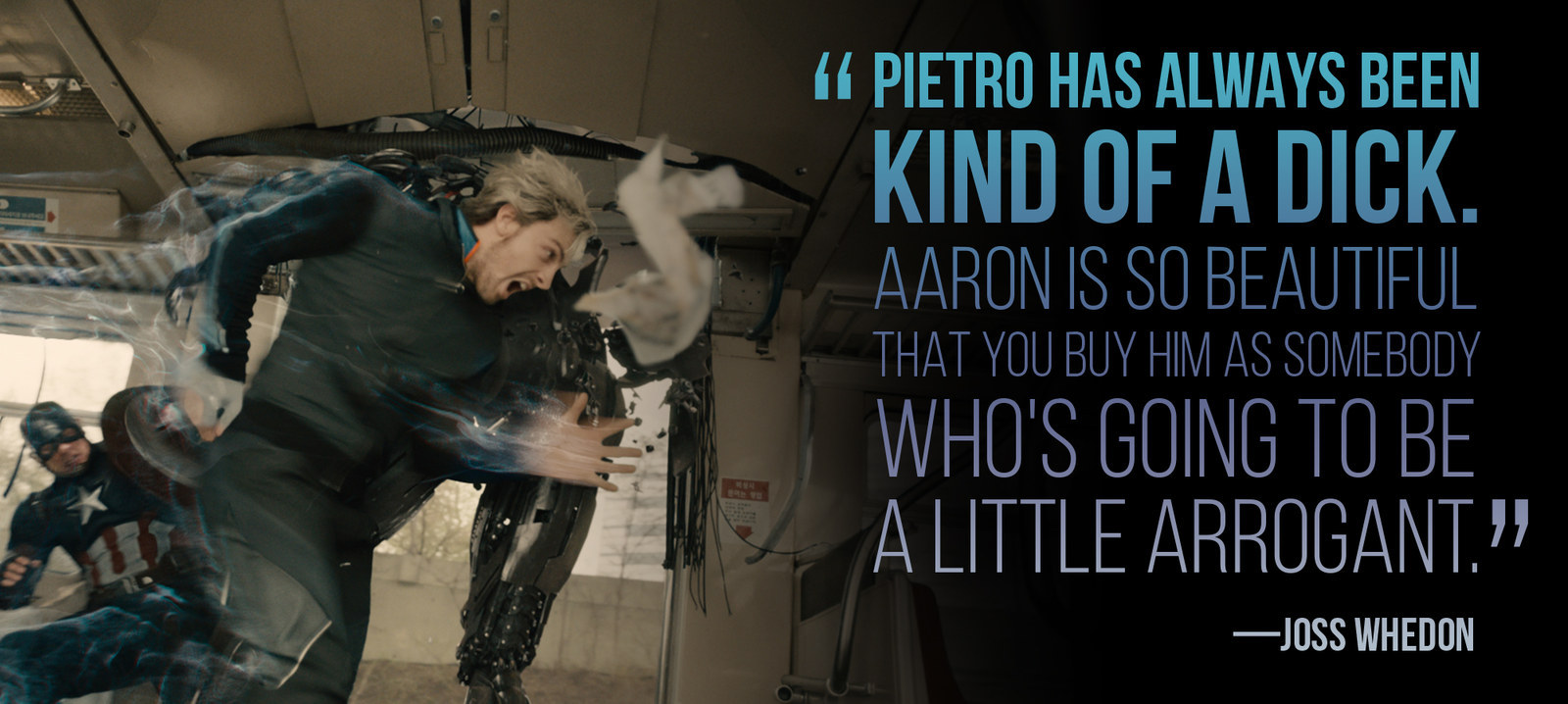
To pull that off, Whedon needed to find actors who could earn the audience's sympathy even as they were actively preventing the Avengers from thwarting the artificially super-intelligent robot Ultron (voiced and performed via motion capture by James Spader) and his plans to eradicate humanity. For the hot-tempered and perpetually restless Pietro, Whedon said the only actor he wanted was Taylor-Johnson, who first rose to prominence playing another comic-book hero in 2010's Kick-Ass. "He is an old-school movie star," said Whedon. "Pietro has always been kind of a dick. Aaron is so beautiful — like sculpture beautiful — that you buy him as somebody who's going to be a little arrogant. He's not as a person. He's a dear. He works his ass off. But I knew that he could play that guy."
For the calm and steady Wanda, Whedon said Marvel executives suggested he check out Olsen's electrifying performance in 2011's Sundance hit Martha Marcy May Marlene in which she played a young woman reacclimating herself to the world after escaping an abusive cult. "I met her, and was like, Oh yeah. This is not a conversation either. I think she's unforgettable." Olsen's ethereal demeanor also jelled with Whedon's desire to dial down the character's more theatrical persona in the comics. "She's not going to wear a giant tiara and a red leotard," he said.
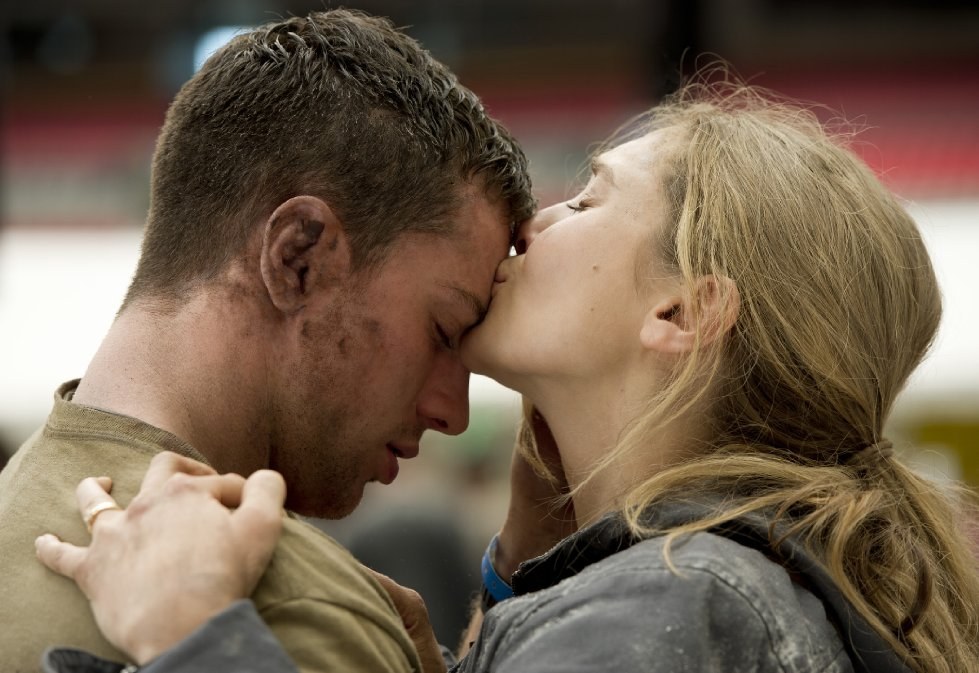
Olsen and Taylor-Johnson had also recently worked together on 2014's Godzilla, where they played a married couple who spend almost the entire movie apart. "It's nice to already know someone," said Olsen with a wry smile. "We ended up spending a lot more time doing [publicity] than filming that film. So we already were buddies."
And though they were barely together in their first project, Olsen and Taylor-Johnson were practically never apart while making Age of Ultron. "They're super protective of each other. In all the comic books, they're always super close or touching or holding hands or something,” said Olsen. "So we're trying to incorporate that so it doesn't look a little weird. But they're the most important things in each other's lives."
Indeed, the Maximoff twins' profound closeness was born from their parentless childhood. "He's like, 'Don't talk to my sister. Don't touch my sister,'" said Taylor-Johnson. "He's kind of fatherly in that physical, aggressive kind of way. And then there are times where you see that she's consoling him and kind of nurturing him in a motherly way. He's quite a vulnerable person. They both are."
That vulnerability also taught Wanda how to exploit other people's weaknesses — and provided Whedon with yet another new storytelling opportunity. "She can make you have a nightmare, is one way of putting it," he said. "'Trip balls,' would be another one. That was something I very much wanted, because it meant we could spend a little time inside the Avengers' heads — either their past or their impressions of what's going on, or their fears, or all of the above. And confronting that is very debilitating for the Avengers, but it's also kind of revelatory. That's not the movie I made last time. I could never have done that."
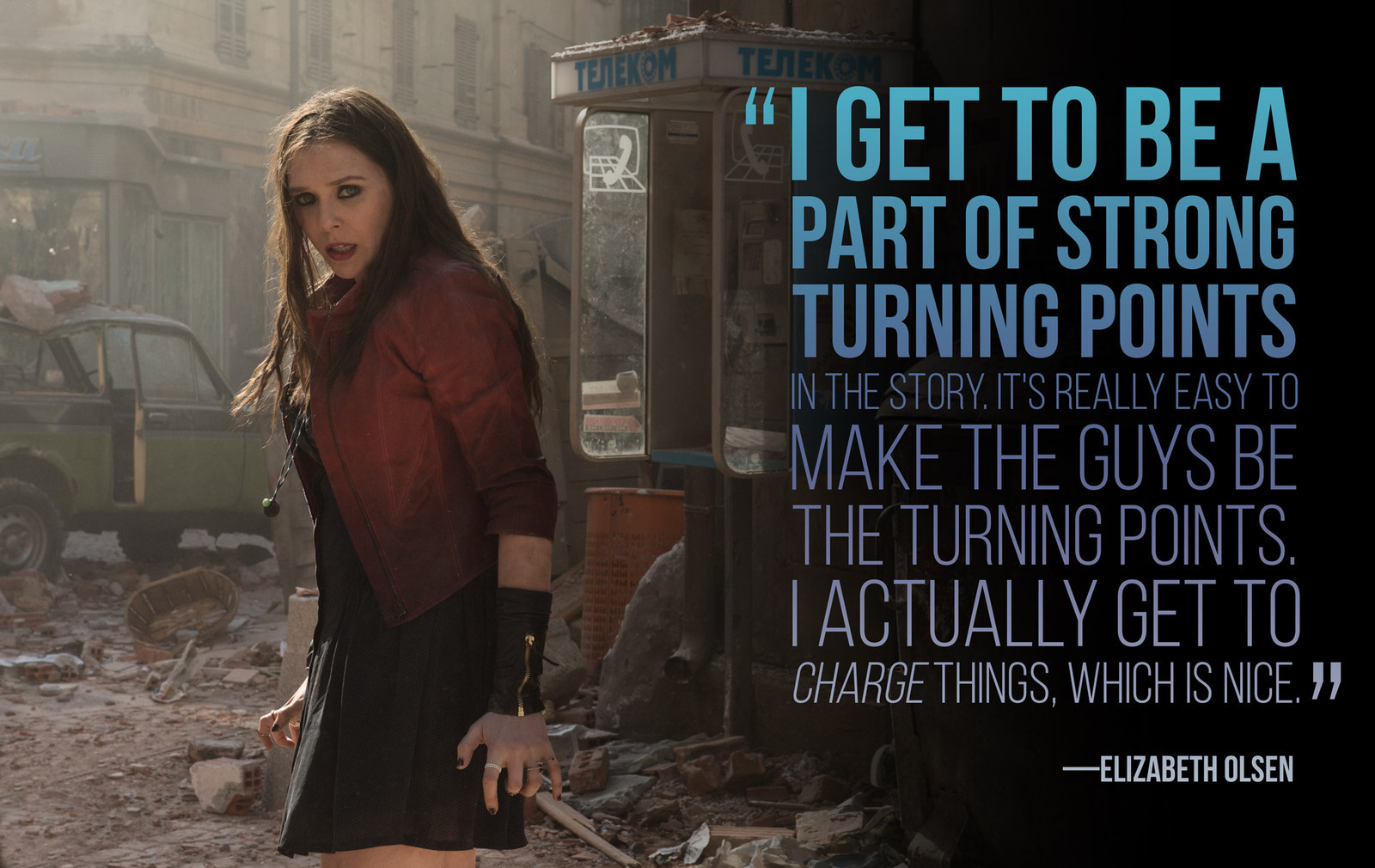
Whedon confirmed that those trips inside the Avengers' psyches are why fans have noticed Idris Elba (who plays Thor's compatriot Heimdall) and Hayley Atwell (who plays Captain America's 1940s flame Peggy Carter) listed on the Age of Ultron poster. And for Olsen, getting to pull those psychological strings was a much appreciated opportunity. "I do get to be a part of strong turning points in the story," she said. "If you're in a group of a lot of men, it's really easy to make the guys be the turning points. I actually get to charge things, which is nice."
Figuring out how Scarlet Witch manifests those powers on screen proved to be one of Whedon's favorite parts of making Age of Ultron. "The Marvel Universe is very grounded in reality,” he explained. “We have Guardians [of the Galaxy]. We have Thor. But at the end of the day, you know, a blaster, a hammer, it's all grounded. This is a girl who tosses spells around. You want that physicality to be very believable. You want to feel the directionality and the specificity. Sometimes I'm just straight-up pedantic about, This is what she's trying to accomplish, so let's create a motion that is exactly that."
In practical terms, that meant that Whedon often found himself moving his body as if he were Scarlet Witch. "I spent more time doing those movements than any other thing when I was writing script," he said. A knee injury, however, kept the filmmaker from totally immersing himself into the character’s physicality, so he turned to movement coach Jennifer White to help interpret his ideas into reality on set.
But Whedon just couldn’t help himself. After shooting Pietro throwing Wanda in front of the pack of Ultrons on the London set, Olsen and White watched their director, with tremendous concentration, swirl his arms over his head and then thrust them to either side, movement that would ultimately result in a burst of red kinetic energy surging from Wanda's arms, obliterating the Ultrons before her. (Less than two weeks later, Whedon underwent knee surgery that prevented him from attending San Diego Comic-Con with the rest of his cast. "I may have misinterpreted how much I could do," he told BuzzFeed News a month later.)
Whedon filmed Olsen dispatching Ultrons from several angles, including one using an ultra-high-speed camera. That shot would later be combined with one of Taylor-Johnson running through the same frame at regular speed, to re-create how the world looks to Quicksilver when he's operating at his top velocity. The filming strategy proved especially taxing for Olsen, who had to maintain Wanda's stable bearing even amid utter bedlam — every quiver in her face was amplified enormously in slow motion. "There's live cars on fire and gunshots and all those things," Olsen said. "I have such a bad nervous system that … I have to know exactly when there's gonna be a loud noise or a spark or else I'll jump or twitch or something."
For his part, Taylor-Johnson also struggled at first to nail the deceptively simple act of how Quicksilver would look while running on camera. The obvious option — shooting Taylor-Johnson running on a treadmill in front of a green screen — proved to be a non-starter. "There was no real life to it," said Taylor-Johnson. "It looked really dull." Instead, the production started shooting Taylor-Johnson outdoors, as he sprinted over natural terrain. "The more dynamic or the messier my arms were or the wider my legs were, [and] the more I changed up the wave and the rhythm of the running, the better," he said. "It feels more emotional and expressive. It's a lot more fun that way."
And it was important to make Quicksilver's running as distinctive as possible — thanks to the character's appearance in both X-Men and Avengers comics, Evan Peters had already played him in 2014's X-Men: Days of Future Past. "It's a unique scenario," Age of Ultron producer and Marvel Studios chief Kevin Feige, a master of understatement, told BuzzFeed News on set. "That's the only character where that could happen, and it happened."

Whedon said he had made it known within the Marvel offices that his plan was always to use Quicksilver in Avengers 2. "And then, you know, months after I started, they were like, [Days of Future Past] just changed Juggernaut to Quicksilver. I'm like, What?!" Both Whedon and Feige praised the central Quicksilver sequence in Days of Future Past — in which Peters races through a prison kitchen and takes out several guards who are attacking his friends — but they were also eager to downplay any comparisons audiences might try to make between the two versions of the character.
"We knew it would be very different based on the various interpretations of the character through the comic," Feige said. "It may as well be different characters."
"There's going to be an entire season of The Flash that's gone on before my movie too, and what Aaron is doing and what I wanted him to do is so different from what they were doing in that movie, that I think we're fine,” Whedon added. “I think there's room for more than one Quicksilver. But yeah, I was never thrilled."
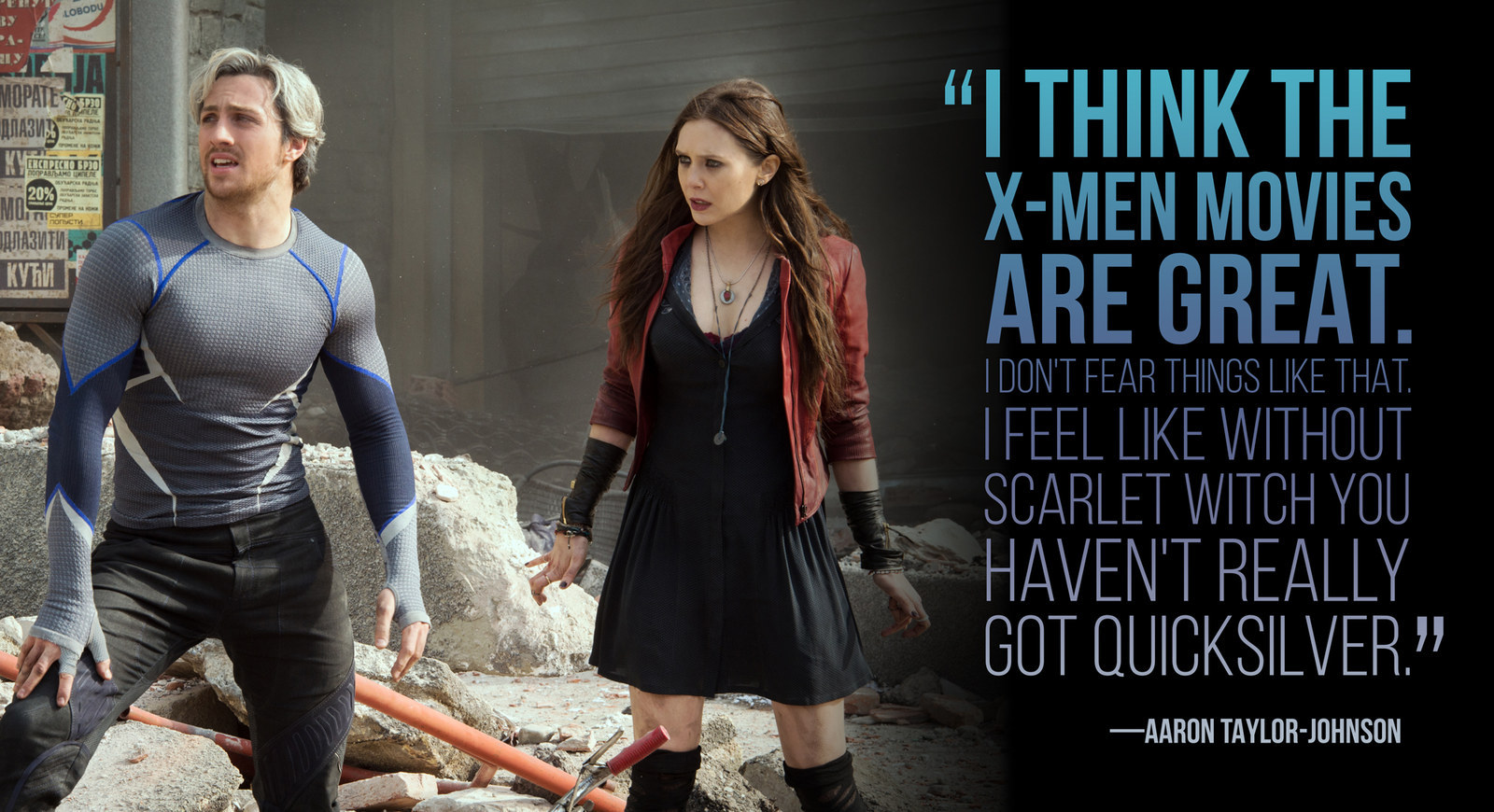
For Taylor-Johnson, it was doubly strange, since Peters had played one of his best friends in Kick-Ass. "I bumped into him, actually, at Comic-Con [in 2013], when we were doing Godzilla, and they were doing X-Men. I said to him, 'How was it? How was the shoot?'" Taylor-Johnson remembered with a laugh. "I think the X-Men movies are great. I don't fear things like that. I feel like without Scarlet Witch, you haven't really got Quicksilver. We're not just, like, a little moment in this. We have a story. We have a history. Yeah, OK, he's fast as fuck, but who cares? It's just a super power, you know? You're gonna want to know about Tony Stark in order to love Iron Man. We want to know [Bruce] Banner before we can understand why he's so destructive as Hulk."
Both Olsen and Taylor-Johnson were keenly aware of the expectations that come with bringing 50-year-old comic book characters to life on screen amid such a star-powered ensemble. But they dealt with their anxieties in contrasting ways that, coincidentally, remained true to their characters' divergent temperaments.
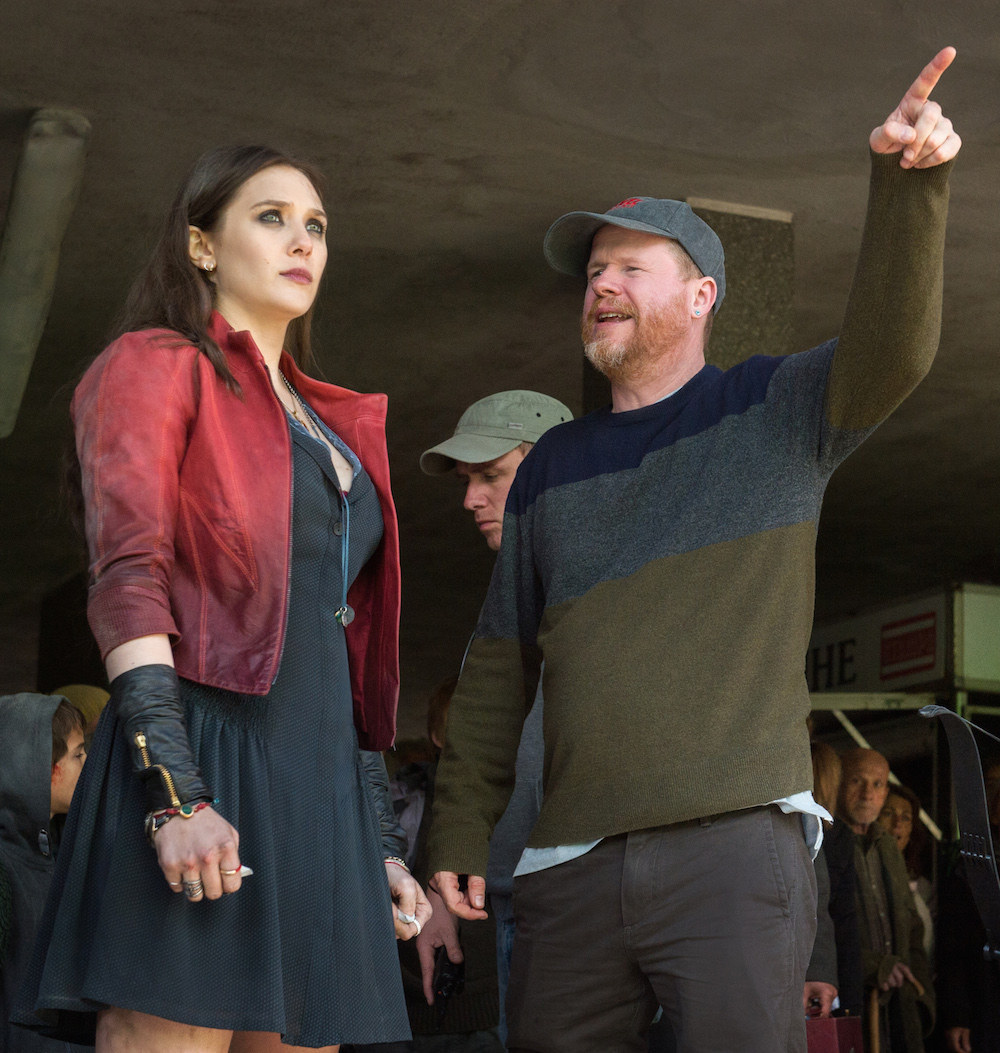
"It feels like the more of a fool you make of yourself, the easier it is for everyone to become your friend faster," said Olsen matter-of-factly. "Especially being a chick. When you're a chick, and there are like six guys in the room that you're working with, you've gotta do the guy jokes, which is fun for me."
Taylor-Johnson, meanwhile, saw things at first through a much more skittish lens. "Stepping onto the set is quite daunting, scary, overwhelming, surreal," he said. "I remember the first week I was like, I'm doing an eastern European accent, I've got a white wig, and it's sort of not yet fitting right. I’m going to be a rookie on set. And they're going to put us through initiation tests to fuck with us."
It turned out to be quite the opposite. While their characters believe they can only rely on each other and look upon the Avengers as, at best, barely tolerable, the actors quickly learned they had joined a team of supportive colleagues.
"Downey actually did a little dinner for us all," said Taylor-Johnson. "It was both Chrises, Mark, Jeremy, me, Lizzie, a couple nights before we had a big scene. … Everyone looks out for one another. It's a real family. It's really nice. You know, someone like that knows the power they have. The fact that they do that — it's brilliant."
Whether the pair will become more permanent members of the Avengers family remains unclear. Taylor-Johnson would only say that his status “is sort of up in the air,” and Olsen allowed that her commitment is “this [film], and another.” But in a cinematic universe derived from decades of comic book lore — where characters can disappear and even die only to be resurrected via alternate dimension, life model decoy, or some other fanciful creative invention — one never really knows what might be next. Especially since, in the case of the Maximoff twins, Age of Ultron just scratches the surface. “I have no idea what’s in store,” said Olsen. “Like, not a clue. But I like the character so much. I can’t wait to steal stories from the comics. I think it’d be really fun.”
Check out this featurette on the Maximoff twins:
View this video on YouTube

More from the set of Avengers: Age of Ultron:
Joss Whedon’s Astonishing, Spine-Tingling, Soul-Crushing Marvel Adventure!
What’s At Stake For Thor, Captain America, And The "Avengers" Franchise

